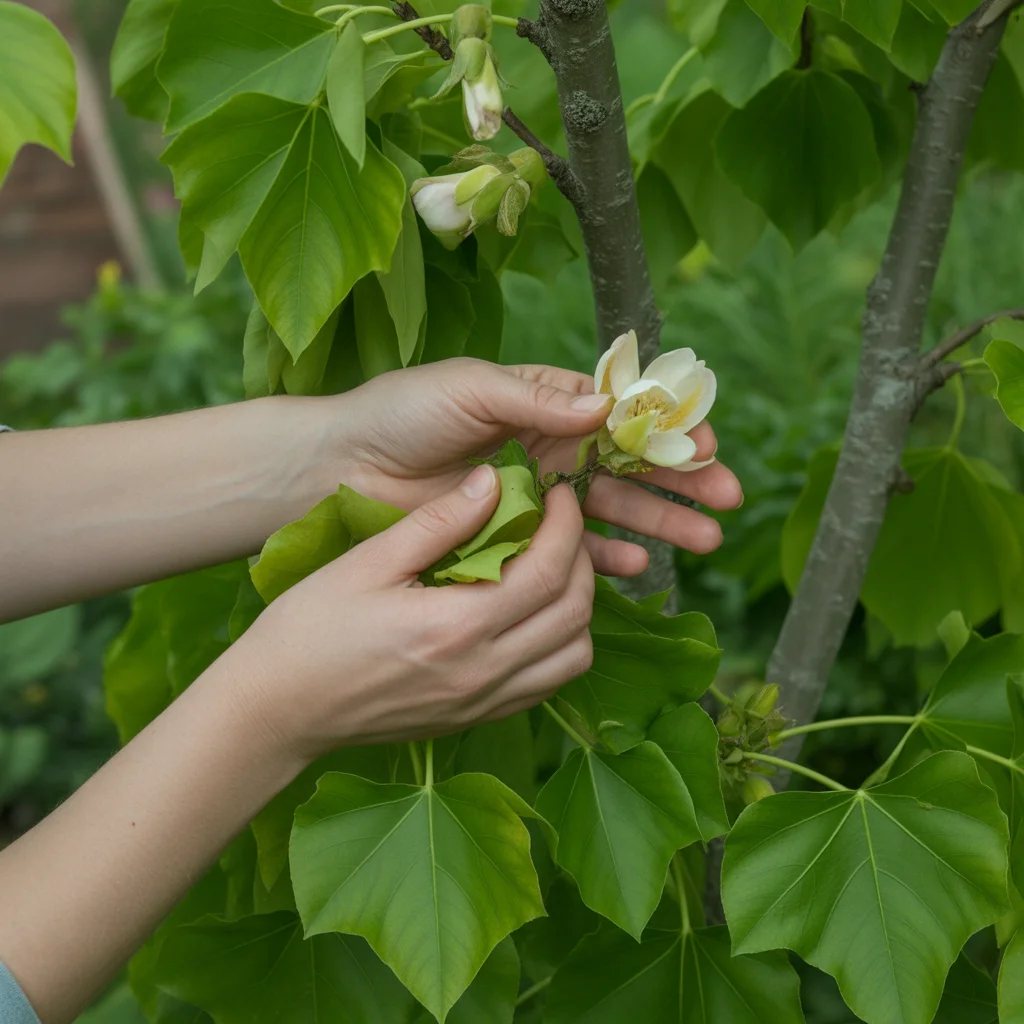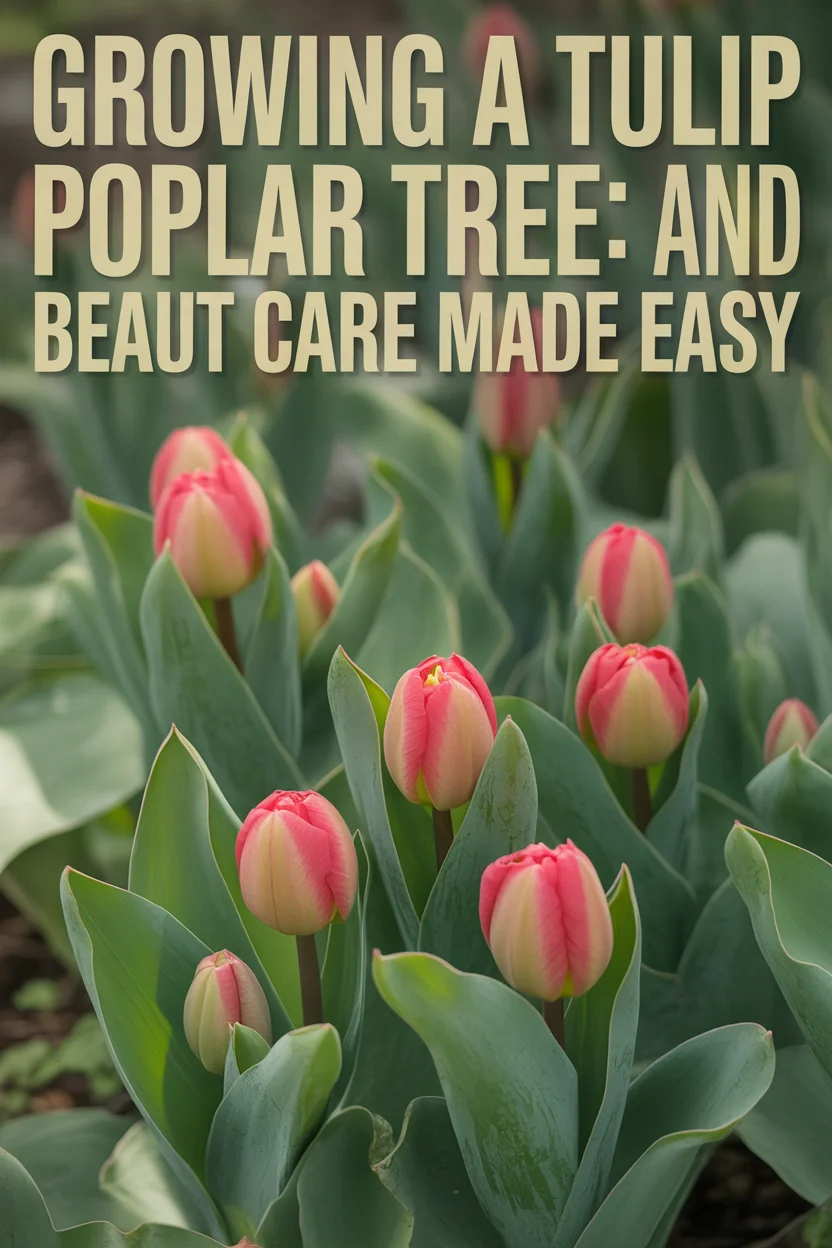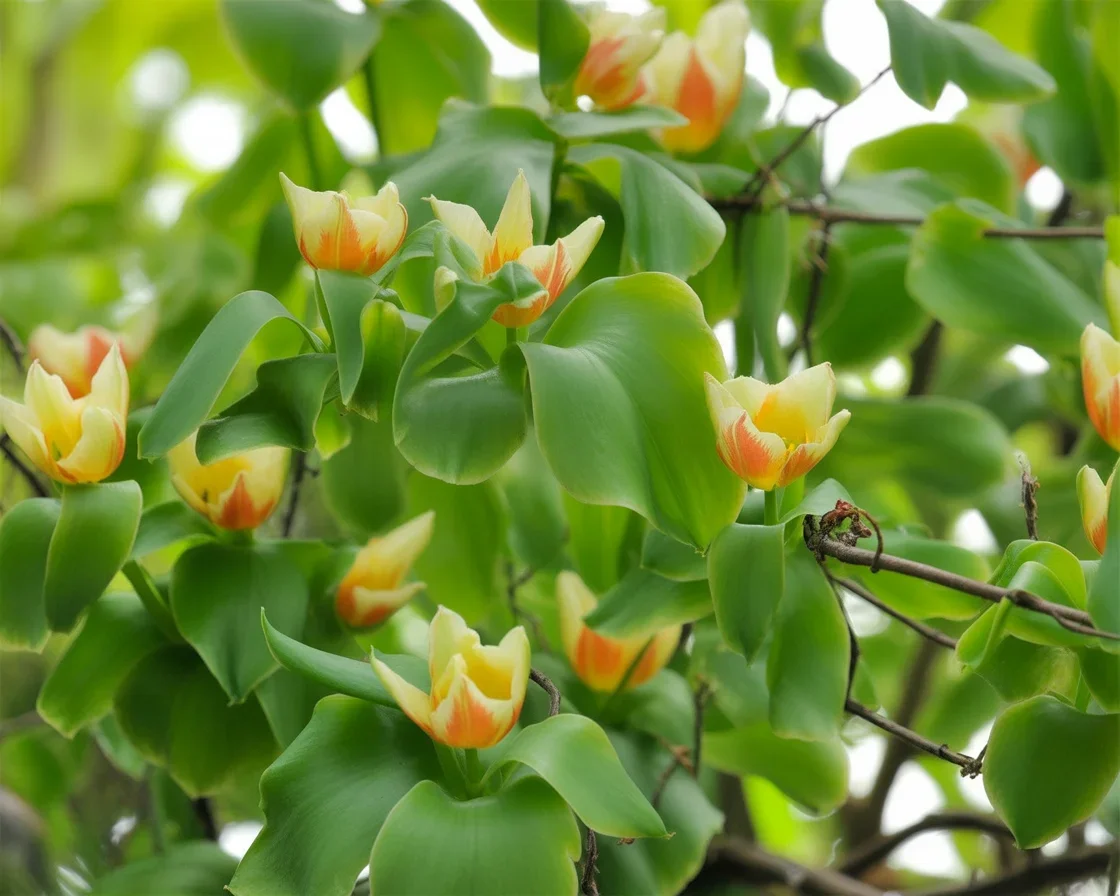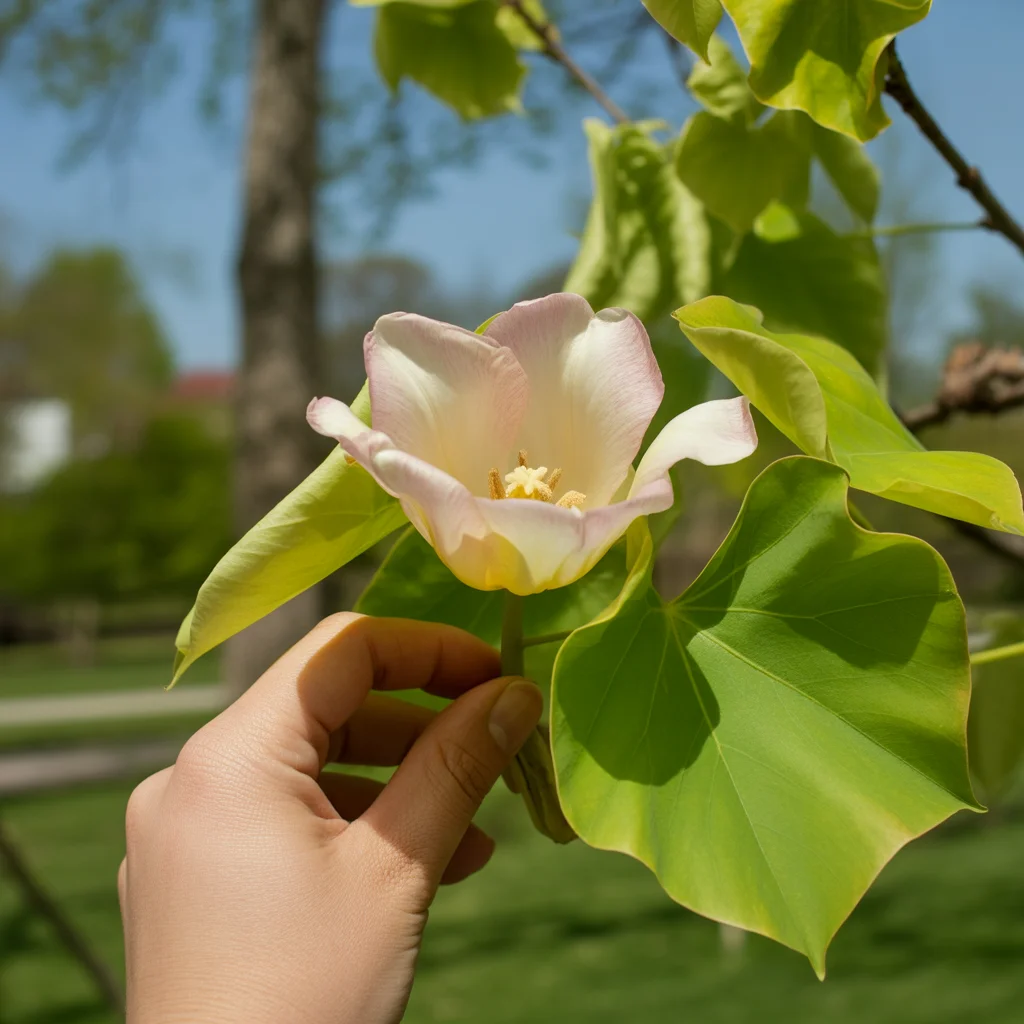Tulip Poplar Tree kind of sneaks up on you, right? One day, you’re struggling for shade in the backyard. The grass looks like it’s begging for mercy. And then—you see a neighbor’s yard, these huge, gorgeous leaves and crazy goblet-shaped flowers. That’s when tulip poplar envy really kicks in. I went down the rabbit hole (seriously, four cups of coffee deep) looking for the best fast-growing shade trees and, wow, the Tulip Poplar Tree kept popping up. Later, I found out it’s basically a superhero for privacy too. So if you’re hunting fast-growing privacy trees, you better believe this one’s top of the list.
TABLE OF CONTENTS
Description
This tree is straight-up impressive. The Tulip Poplar Tree isn’t actually a poplar, but folks keep calling it that anyways. (Names stick, what can you do?) It’s got these funky-shaped leaves. They’re like a cross between a cat’s face and a tulip. In spring, the tree goes wild with the prettiest yellow-green flowers. Some people miss the blooms, since they’re up so high, but trust me, they’re worth craning your neck.
Best part, honestly? The size. We’re talking massive—like, “block-out-your-entire-street” kind of shade. But it stays neat, which is great if you can’t stand messy trees. All throughout summer, those thick leaves create a private oasis and then, boom, dazzling golden leaves in fall.

Taxonomy
Let’s untangle the science. This is where it gets a bit wonky, but stick with me. The Tulip Poplar Tree belongs to the magnolia family (Magnoliaceae… I know, sounds fancy). Its proper name is Liriodendron tulipifera. “Lirio” means lily. “Dendron” means tree. So, lily-tree, which actually fits if you squint at the flowers.
Here’s a quick (kind of dorky but helpful) table for a better peek:
| Common Name | Scientific Name | Family | Native Range |
|---|---|---|---|
| Tulip Poplar Tree | Liriodendron tulipifera | Magnoliaceae | Eastern North America |

How do you take care of a poplar tree
Here’s the lowdown, plain and simple. If you’ve ever worried you’d “kill it,” don’t stress. Tulip Poplar Tree is forgiving but a few care hacks help it thrive.
- Plant it in a spot with full sun. These guys hate being in the shade.
- Water young trees regularly (first two years—you’ll know they appreciate it).
- Toss on mulch, but not up against the trunk. Gives roots a breather.
- Watch for those early pests—aphids and scale like to visit. Blast ’em with the hose or a little soapy water.
One last thing? Don’t crowd it. Roots and branches need space to spread out—kind of like me on Thanksgiving.
Distribution and Habitat
This tree is a hometown hero in the eastern United States. You’ll see Tulip Poplar Trees from northern Florida up to Massachusetts, all the way over to Illinois. They adore rich, moist soil. Honestly, if you’ve got clay or heavy, soggy dirt, they’ll do fine so long as the site drains well.
They’re everywhere in bottomland forests. Old farms, city parks, even highway medians try to squeeze one in. I once saw one crammed on a little patch next to a mall and, wow, it still towered over everything.
Ecology
I’ll say this—Tulip Poplar Tree is practically a wildlife magnet. Bees love those springtime blooms for nectar. You might even see a line of butterflies and hummingbirds drop by. And then birds? They treat the seeds like an all-you-can-eat buffet.
What’s cool is, they grow fast. So in just a handful of years, you’ll have tons of leafy cover and food for critters. Occasionally a deer will try a nibble, but—fun fact—they don’t usually go for it. Can’t blame ’em, it’s a tough leaf.
Use
People plant Tulip Poplar Trees for good reasons (and not just because they look stunning from the curb). Builders love the wood—super straight and easy to work with. You’ll find it in furniture, some crazy-nice flooring, and way back, even in old canoes and log cabins.
Tree gives shade like a five-star umbrella. Plus, they’re often a show-off tree in gardens and big yards. And if you want a “look at me” spot to read or nap, their shade is pure gold on a summer afternoon.
How many years does it take for a tulip poplar to bloom?
Patience is the name of the game here. Most Tulip Poplar Trees need about 12 to 15 years before you see those tulip-shaped flowers. Doesn’t that feel forever? Still, they’ll put on lots of leafy show before then.
If you plant a smaller sapling, grab your coffee and settle in—blooms take their sweet time. One spring, I checked daily, then finally spotted those flowers around year thirteen. Victory lap around the yard!
Where do tulip poplar trees grow best?
Hands down, they love full sunlight and deep, loamy soil. Drainage is 100% key. Can’t stress that enough. If you’ve got a soggy patch, mix in compost to fluff it up (they’ll thank you later). They’ll even tolerate a bit of clay, but stay away from spots where puddles stick around after big rains.
They grow best in USDA zones 4 to 9. So, if you’re in the middle, South, or parts of the Northeast, you’re golden. Folks in super dry or salty coastal spots—eh, probably not the best fit, pick a different shade king. If you’re curious how other beauties handle different soils, peek at these amazing autograph tree care tips or maybe get wild with a DIY avocado tree in a garden pot.
Give Tulip Poplar Tree a Go… You’ll Love It
Listen, if you’re after a show-stopping, fast-growing shade tree that works double duty for wildlife, you seriously can’t go wrong growing a Tulip Poplar Tree. It’s sturdy, beautiful, and has loads of history behind it—just check out what the folks at The Morton Arboretum have to say. I’m honestly still wowed every spring, and if you want the nitty-gritty details, the Wikipedia page for Liriodendron tulipifera is a treasure trove. Trust me: give one a try and you’ll have neighbors peeking over the fence in no time flat.
Common Questions
Q: Are tulip poplar trees messy?
A: Not especially. Leaves and flowers drop once a year but no sticky sap or branches raining down daily. Phew!
Q: How fast do they grow?
A: Super quick. You can expect almost two feet a year if they’re happy.
Q: Can I plant them near my house?
A: Don’t. Roots can get huge. Give at least fifty feet from buildings.
Q: What’s the typical lifespan?
A: Can go up to 300 years, sometimes more with good care—talk about outliving us.
Q: Do they get pests or diseases often?
A: Mostly healthy, but early on you want to keep an eye out for aphids and canker.


